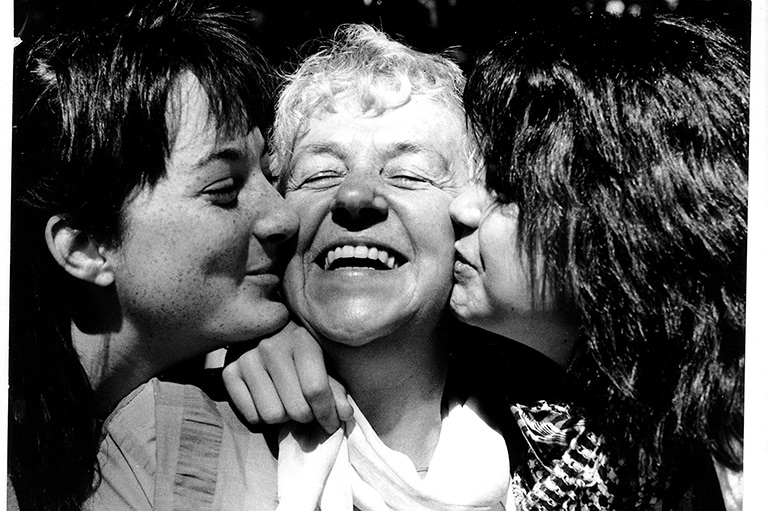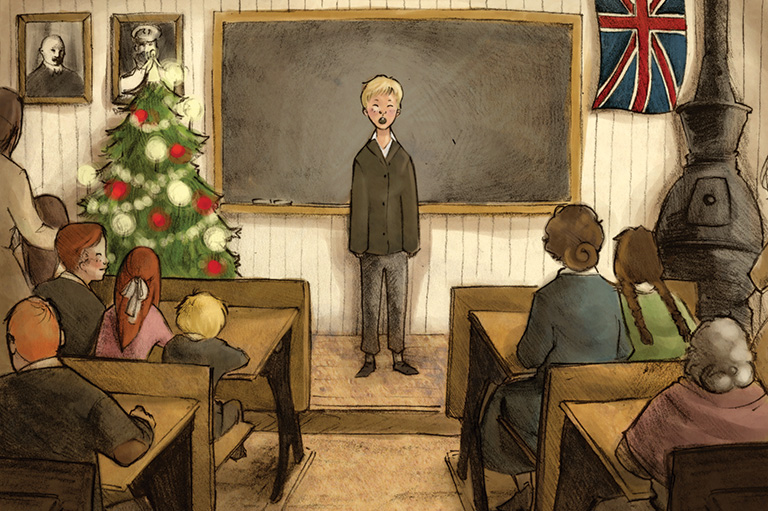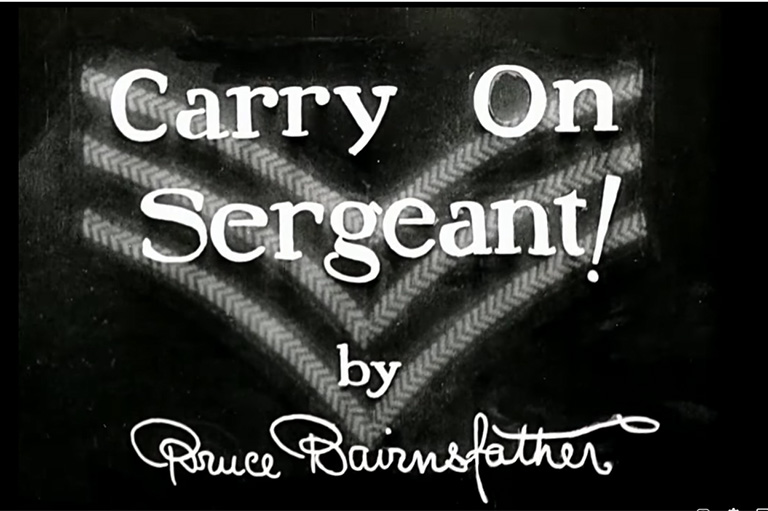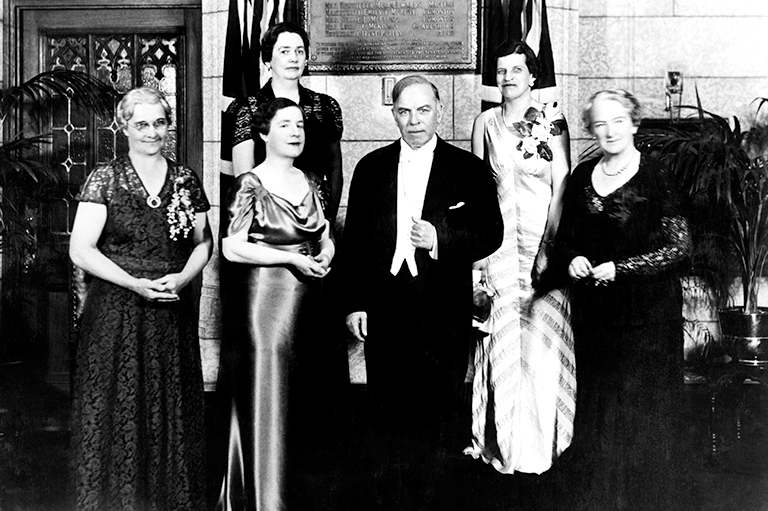Lawrence of Canada
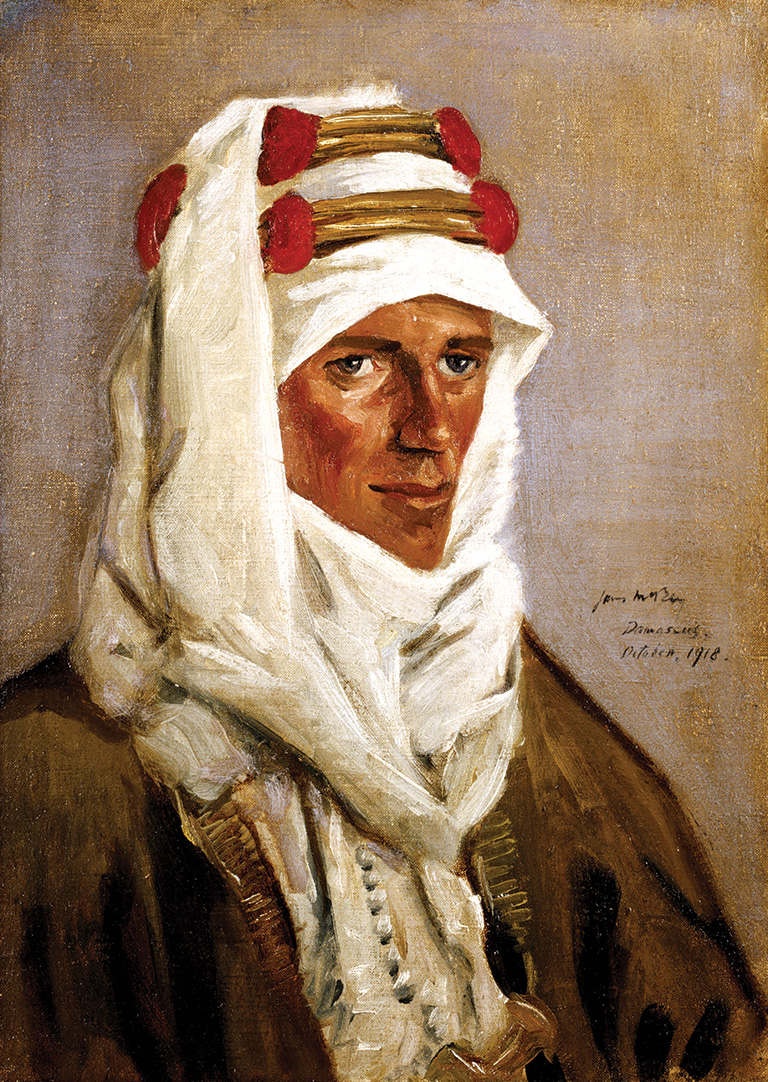
The original version of the Lawrence of Arabia legend goes like this: A young, blond-haired, blue-eyed English archaeologist named Thomas Edward Lawrence volunteers to fight for the British in Arabia during the First World War. He earns the trust of King Hussein of the Hejaz and his son, Prince Feisal, and works almost single-handedly, with deeds of unmatched heroism and valour, to lead the oppressed peoples of Arabia in revolt against their despotic Turkish overlords.
The Lawrence legend was created and popularized by American journalist Lowell Thomas in a series of multimedia “travelogues” that premiered in New York City in March 1919. Thomas moved the shows to London, England, in the summer of 1919 for a very popular six-month run, and then on to several major cities in the British Empire — including Sydney, Australia, Auckland, New Zealand, Mumbai, India, and Ottawa — over the next decade.
By 1928, more than four million people had flocked to hear Thomas and to “experience the legend” of Lawrence of Arabia. Thomas’s show became a global multimedia sensation and made Lawrence one of the earliest and most famous celebrities of the twentieth century.
“Thomas provided a war-weary Allied public with a romantic campaign to celebrate,” wrote Joel Hodson in Lawrence of Arabia and American Culture: The Making of a Transatlantic Legend. “He gave them a gentleman cavalry general capturing Jerusalem and a modern-day knight in white robes racing around Arabia, instead of gruesome images of corpses draped over barbed wire and young men mangled by machine-gun fire and massive artillery barrages.”
Thomas’s role in creating and popularizing the Lawrence of Arabia legend is well-documented.
An intriguing Canadian aspect of the story, though, is buried deep in the archives. Six weeks after finishing in New York, and two and a half months before opening in London, Thomas brought his multimedia extravaganza to Toronto’s Massey Hall for a limited, two-week engagement. The run was important because Toronto was the first market in which Thomas and colleagues tested their world-beating publicity machine after their uneven start in New York.
More precisely, the pieces Thomas and colleagues wrote for the Toronto Daily Star to promote the shows marked the first time core elements of the Lawrence of Arabia legend were published anywhere in the world.
But who was Lowell Thomas, and how did he come to meet T.E. Lawrence in Arabia? And why did he and Star editor and show sponsor Joe Atkinson think postwar Toronto would be a good market for shows about a minor military campaign in far-off Arabia? What were the core themes, central story elements, and hyperbolic language in the Toronto preview that would go on to captivate world audiences for decades to come?
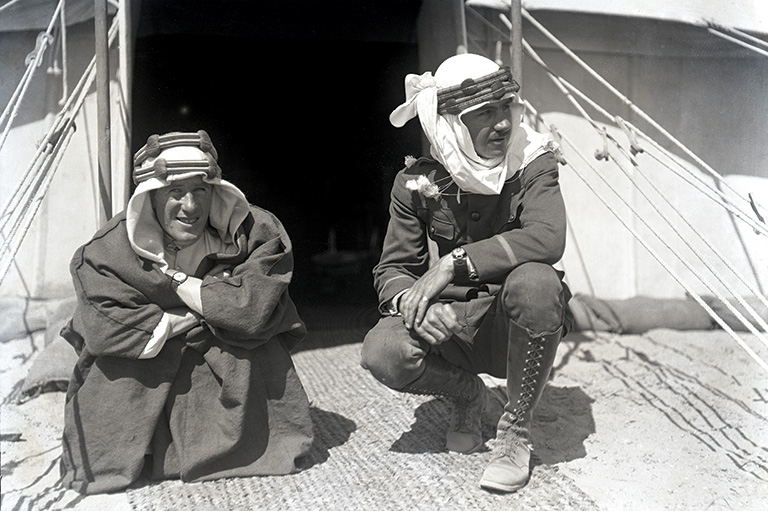
The story of how Lowell Thomas brought his legend of Lawrence of Arabia to Toronto’s Massey Hall begins shortly after the United States entered the Great War in April 1917. Then an energetic young journalist, editor, and lecturer, Thomas used his connections and the sheer force of his personality to convince senior U.S. officials to support “a trip to Europe to gather material for a series of war travelogues.” These were to be “illustrated with about three reels of colored motion pictures interspersed with 150 colored slides each” and designed to arouse “American people to a whole-hearted support for the Administration and the war.”
To fund the trip, Thomas sold US$100,000 worth of shares in a newly created venture called Thomas Travelogues Inc. Covering his bases, Thomas also secured credentials as a war correspondent from twenty-six major newspapers across North America, including the New York Globe and the Toronto Star, promising to provide weekly war updates in exchange for sponsoring his travelogues after the war.
After four months of stalemate on the Western Front, Thomas learned that General Edmund Allenby, who led the British forces in the Middle Eastern theatre, had captured Jerusalem. Smelling a more sensational — and saleable — story, Thomas sought British and American support to visit Palestine, arguing that “the restoration of Palestine to the Christians after 400 years of Moslem occupation was of the greatest possible importance” to North American readers.
Permissions were secured, and Thomas and cameraman Henry Chase set sail for Palestine in early January 1918.
In transit, Thomas reported hearing of “fantastic yarns ... in hushed tones about a certain young Englishman who was said to be at the head of the wild Bedouin hordes which were sweeping the Turks out of Mecca, Medina, and all of Holy Arabia.”
On February 27, Thomas and Chase met the man behind the rumours in the office of Colonel Ronald Storrs, the British military governor of Jerusalem.
Lawrence, twenty-nine, was not tall — only five feet four inches — with “skin too fair even to bronze after 7 years in the Arabian desert,” wrote Thomas in his diary, adding that “the very quiet talking, very modest ... research man from Maudlin [sic] College, Oxford” went about barefoot and in the costume of an Arab warrior: “He is an Ameer [chieftain] of the Hejaz and only white man ever made a Sherif and probably only one who ever will be. Always alone with Arabs. Last year never slept more than 3 nights in one place. He acts for the Sherif, signs his name for him and has free hand. He really brought Arabs north into Syria. Arabs trust him because he has accomplished results that no one else ever did. Price of 5000£ on his head by Turks.”
Sensing an even more sensational story than the capture of Jerusalem, Thomas sought Allenby’s approval to visit Lawrence in the field to gather footage of the blue-eyed “King of the Hejaz” in action.
Thomas and Chase met Lawrence in Aqaba, in what’s now southern Jordan, on March 27, along with Prince Feisal, the leader of the Arab forces.
They spent a total of five days there with Lawrence — the sum total of their time with him in the region — and another five travelling to Aba el Lissan, Shobak, and the ancient city of Petra, gathering material for their shows.
The pair left Aqaba in early April and travelled back across the Mediterranean in the summer, the Western Front in the fall, and eventually postwar revolutionary Germany in early winter, gathering stills and footage for future shows.
Back in New York after the war, Thomas and Chase spent much of February 1919 putting miles of film and tens of thousands of still photographs into the travelogue format, which was described by Thomas as “moving pictures and stills to transport audiences to places they’d only imagined ... a wholly new and spectacular form of entertainment such as no one had ever before attempted in an elaborate way.”
Six shows emerged, and they were billed under various names. The main ones included The German Revolution, With Allenby in Palestine, and Freeing Holy Arabia. Fred Taintor, editor of the show’s official sponsor, the New York Globe, booked the midtown New York, 2,300-seat Century Theatre for a two-week engagement beginning March 2, 1919.
Thomas originally planned to show all six travelogues at the Century, but only two — Revolution and Allenby — actually made it to the stage. According to Thomas’s wife, Frances, who had accompanied her husband to Europe in 1917 and assisted in putting on his travelogues, “Tommie” had been “so swamped” with “the managing end and the publicity” that he had “not a moment to prepare speeches, or to go through his slides with Mr. Chase.”
Thomas judged the Century run a “messy experiment.” Financially, it was a "howling failure."
With 7 uniquely curated newsletters to choose from, we have something for everyone.
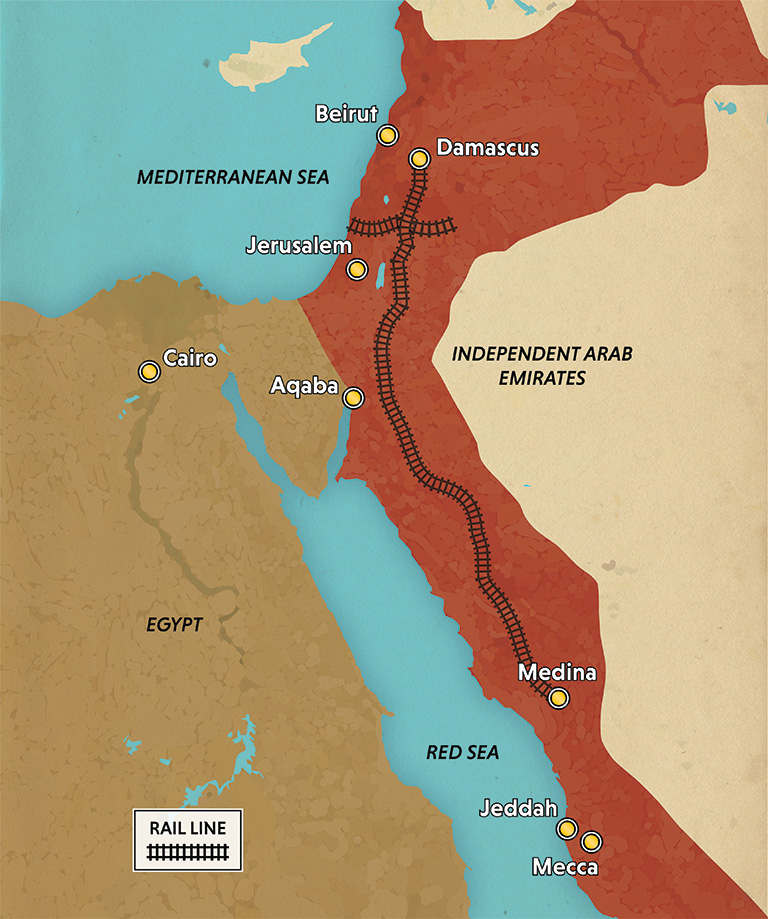
The Arab Revolt
In November 1914, the Ottoman Empire declared its support for Germany in the First World War. Britain, which had originally backed the Ottoman Empire, suddenly found itself in conflict with the Turks in the Middle East. The British government began to look for allies among the Arabs, who resented Ottoman rule. In June 1916, King Hussein, ruler of the Hejaz province (now part of Saudi Arabia), started an uprising with an expectation of British support. The “Arab Revolt” was led by Hussein’s four sons, Ali, Abdullah, Feisal, and Zeid. In 1917, T.E. Lawrence was named an advisor to Feisal. For two years, Lawrence and Feisal led a guerilla resistance campaign against the Turks, sabotaging rail lines and other key infrastructure. The campaign worked to distract the Ottoman army from concentrating its full might against the British forces in the region. The campaign culminated in the capture of Damascus, Syria, in October 1918.
The popularity of Allenby, though, was enough for Taintor to book the 1,200-seat Garden Theatre (next door to Madison Square Garden) for a five-week engagement beginning March 17. While more central for theatre-going audiences, close proximity to the Garden had its downsides, as Frances Thomas noted in her diary: “Barnum and Bailey were next door all during the time we were there. The odors were obnoxious, but Tommy in a very clever way, at the beginning of his lecture said, ‘As you probably have discovered the circus is next door. When Barnum and Bailey discovered we were making a trip to Palestine on camels, they kindly consented to put the beasts directly under us so that we might have the Oriental atmosphere.’ This always went over great with a big roar and we were off on a destroyer to Malta.”
Only near the end of the Garden run did Thomas decide to show Freeing Holy Arabia, the “amazing story of a mysterious Englishman,” for the first time. In all, Allenby played forty of the total fifty-five show days at the Century and Garden theatres — Revolution seven, Arabia five, and From Hoboken to the Rhine three.
In New York, Lawrence was not yet the star of the show. The popularity of Allenby, though, allowed Thomas to hire James Craig, whom he described as “a re-write man from St. Louis,” and Carl Getz, “a clever advertising and publicity man,” to prepare for marketing and publicizing the shows beyond New York. London — and the world beyond — was on the radar, but not before a stop at Toronto’s Massey Hall.
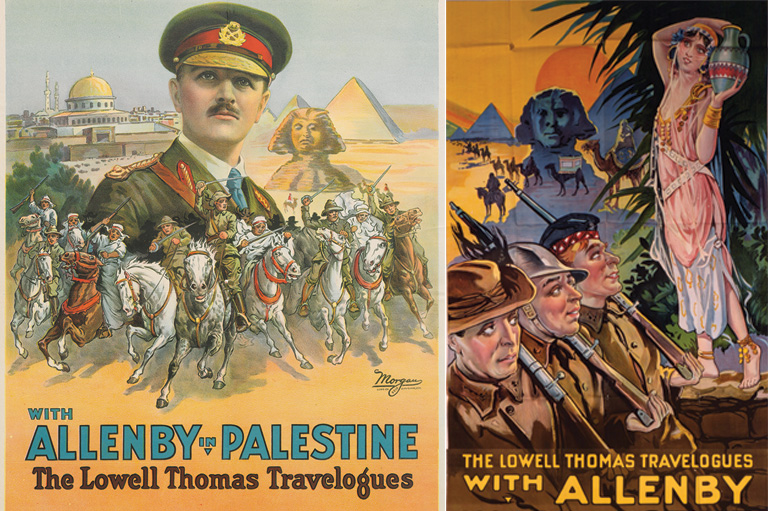
Legend has it that British impresario Percy Burton saw Allenby at the Garden Theatre and was so impressed that he “begged” Thomas to bring the travelogue to London, England. Burton purportedly promised to book the Royal Opera House in Covent Garden and to arrange a personal invitation from King George V.
Whatever transaction took place, Thomas opened at the Royal Opera House on August 14, 1919. By all accounts, opening night — and the six-month London run overall — was spectacular. The two-hour show, featuring two hundred and forty lantern slides, thirty film segments, and live musical accompaniment, stood “in striking contrast to the amateurishness of the New York shows,” wrote Hodson. Which begs the question: What exactly happened between New York and London? What accounts for such a dramatic shift in focus, quality, and popularity?
According to Thomas, he, cameraman Henry Chase, and script consultant Dale Carnegie (who later went on to fame with How to Win Friends and Influence People) hunkered down on the ten-day transatlantic voyage to London in August 1919 and combined Allenby and Arabia into a single, more refined show: “I had always believed my two Allenby and Lawrence productions could be woven together,” Thomas wrote. “Both were part of the same story. With Burton’s encouragement, I now decided to combine the two. This meant cutting each by about forty-five minutes, with a complete rewrite job to be done during the Atlantic crossing.
“I saw little of the sea and not much of Fran during the trip. All day and far into the night, Dale, Chase and I were huddled over our projector and scripts, working under the pressure of an opening less than two weeks off. But by the time we docked at Southampton, we had put the two parts into a tight, swiftly moving show: The Last Crusade —With Allenby in Palestine and Lawrence in Arabia.”
Thomas’s account has been generally — and uncritically — accepted. There is evidence, however, to question its veracity. First, Frances Thomas only once mentions her husband working on the show in her relatively extensive diary entries from the transatlantic voyage: “Tommy and Carnagey [sic] are deeply interested in their lecture works,” she wrote on August 2. By lunch, however, she wrote, “Carnagey was looking rather peeked and was asking for best remedies for sea sickness.”
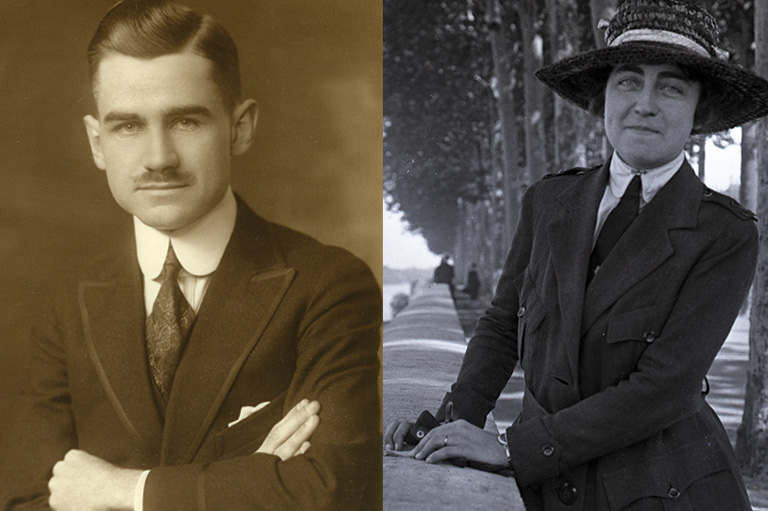
The bulk of Frances’s extensive diary entries describe social life on the voyage — people watching, church services, dinners with the captain.
Her entries about “Tommy” specifically describe him “getting some good, much-earned rest.” Secondly, Thomas’s story fails to credit the huge amount of time and effort he and colleagues put into editing the travelogues and creating publicity for them in the weeks following the Garden run — efforts described in Thomas’s own private correspondence from the period. Third, the standard account fails to credit the role played by a two-week run in Toronto in June 1919 in helping Thomas to develop and to popularize his Lawrence of Arabia legend.
Specifically, the shows at Massey Hall allowed Thomas and his colleagues to publish the first products of their New York “experiment” — a beta version, if you will — prior to both the London shows and Thomas’s bestselling publications, where the legend gets its most fulsome and enduring treatment.
What made Thomas and Toronto Daily Star editor and show sponsor Joe Atkinson think Toronto would be a good market to run two weeks worth of travelogues about a minor campaign in the Great War?
The biggest draw was likely Torontonians’ continued interest in the war and its aftermath. Stories of the German revolution, the drama of the Paris peace conference, and Canadian troops’ painfully slow return home from the European front dominated Canadian newspaper headlines for the first six months of 1919.
Allenby’s “crusade” in the Holy Land also resonated deeply with a very pious and still deeply religious city. And a show at Massey Hall — which a 1932 history described as the corporal epicentre of “civic and national affairs” where “outstanding figures in the religious, political, literary and scientific life of the world would be seen and heard” — was a draw in and of itself. From June 2 to 16, 1919, Thomas and Chase presented four travelogues at Massey Hall, including the renamed With Allenby Smashing the Turks in Palestine seven times and Freeing Holy Arabia six times. Frances described opening day in her diary thusly: “We opened at Massey Music Hall Toronto, the largest hall of its kind there. ... The receipts were low in view of the fact that a terrific heat wave swept over that part, and also because it was out of season for lecturers. We always had to begin with ‘God Save the King’ — then Tommy kidded them along by saying that the British were so modest that an American had to come and tell them of their own achievements."
Save as much as 40% off the cover price! 4 issues per year as low as $29.95. Available in print and digital. Tariff-exempt!
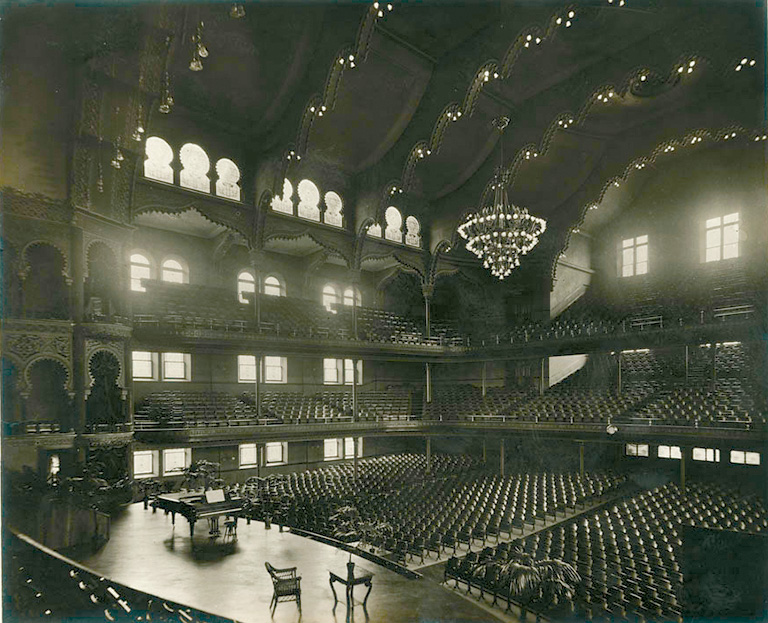
The shows at Massey Hall were promoted in sixteen stories and thirteen text-heavy ads penned by Thomas and Craig and published in the Toronto Daily Star between May 26 and June 16, 1919. The stories are remarkable because they provide a unique and exclusive preview of the legend that would take the world by storm over the coming decade. The stories — filled with breathless accounts of Lawrence’s daring and skill — were actually by-products of longer magazine articles Thomas and Craig had prepared in the six weeks after the New York Garden Theatre engagement ended in April 1919. They were intended as publicity for upcoming shows in Columbus, Ohio, Ocean Grove, New Jersey, London, England, and Ottawa.
The eight most important of these articles were published in the American foreign-affairs magazine Asia between September 1919 and August 1920. They form the basis of Thomas’s entire Lawrence oeuvre. The four articles published in the British serial the Strand between January and April 1920 are based on very slightly rewritten versions of the Asia pieces. The Asia and Strand articles, in turn, make up the bulk of Thomas’s bestselling 1924 biography, With Lawrence in Arabia, as well as the chapters on Lawrence in Thomas’s 1976 autobiography, Good Evening Everybody. These publications were instrumental in making Last Crusade, the twentieth century’s first multimedia production, a sensation and Lawrence — however reluctantly — among its first global superstars. By 1928, more than four million people worldwide had flocked to see Last Crusade, and millions more bought Thomas’s publications. Torontonians unwittingly read about it first in one of their local newspapers.
In one of the first related pieces published in the Star, Lawrence is described as “quiet, rather shy, beardless, with ruddy cheeks.” With a more expansive canvas available in Asia and the Strand, Lawrence becomes “quiet, rather shy, beardless, with ruddy cheeks, possessing in fact none of the physical attributes which attract the admiration of the Arabs in general.” In the Star, Lawrence is a “youthful Oxford graduate” who’d “spent seven years wandering all over Arabia,” “prowling among the Hittite ruins,” “making archaeological investigations,” and “absorbing the language, customs and traditions of the tribesmen until he was thoroughly saturated with them.”
In Asia and the Strand, a more extensive biography begins with Lawrence’s birth in Carnarvon, Wales; follows with his public and university education in Oxford; and then includes his Middle East travels, including work on an archaeological expedition that “uncovered part of Carchemish, the ancient capital of the Hittite Empire.” In Asia and the Strand, Lawrence is said to “speak Hebrew, Arabic, Greek and Latin with much the same fluency and charm that he speaks English.”
The Star reported that Lawrence was “summoned to Cairo” in 1914 and “made a lieutenant and placed in the map department at G.H.Q.,” where “his superiors were not long discovering that Lawrence knew more about Arabia and the Arabs than all the others put together.” After two years behind a desk in Cairo, according to Asia and the Strand, Lawrence asked to accompany Colonel Storrs on a visit to King Hussein in the Hejaz region, a request approved “with evident pleasure,” as “General Headquarters was delighted to have the opportunity of getting rid of the altogether too independent subordinate.”
The Star described Lawrence’s defining contribution to the Arab revolt as resolving “the great problem of all ages in that country,” namely getting the rival chieftains to unite under one leader. At more length in Asia and the Strand, Lawrence is said to have “achieved the impossible: he brought the disunited nomadic tribes of Arabia into a unified campaign against their Turkish oppressors — a difficult and splendid stroke of policy, which caliphs, statesmen and sultans had been unable to accomplish in centuries of effort. Thomas Lawrence placed himself at the head of the Bedouin army of the King of the Hejaz, drove the Turks from Arabia and restored the caliphate to the descendants of the prophets. Allenby liberated Palestine, the holy land of Jews and Christians; Lawrence freed Arabia, the holy land of millions of Mohammedans.”
The Star identified the key to Lawrence’s success as his uncanny ability to “win the esteem of the Bedouins” and to “completely captivate every Arab chieftain with whom he came in contact.” In this, Lawrence’s “chief hold upon his men was his personal bravery. He would charge ahead of the wild tribesmen into the thickest fighting. Although many bullets passed through his flowing garments, he was never once injured.” Lawrence was esteemed because he “could ride harder, shoot straighter, fight with greater daring and endure the hardships of the desert with less fatigue than any of them.”
Asia reported similarly: “Lawrence won the admiration and undying devotion of the Arabs because of his understanding of them, through his proficiency in their dialects and his rare knowledge of their religion, an inestimable factor in settling disputes between antagonistic factions, and even more perhaps, because of his fearlessness and reckless courage, his ability to outdo them in nearly everything in which they themselves excelled."
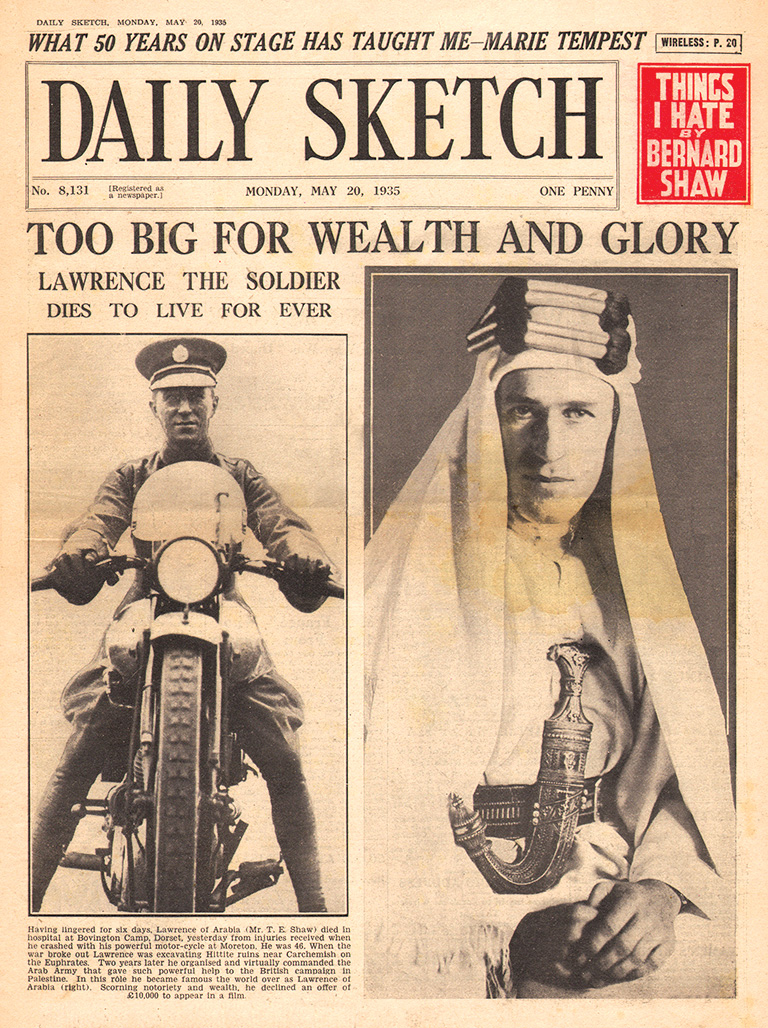
The veracity of Thomas’s Lawrence of Arabia legend has been the subject of much debate. According to Hodson, Lawrence himself was well aware of the production. He answered questions and posed for photos in London in Arab dress, but he had mixed feelings about the result. He once asked a friend, “Have I deserved a Lowell Thomas? ... [His articles and lectures are] as rank as possible, and are making my life very difficult for me, as I have neither the money nor the wish to maintain my constant character as the mountebank he makes me.” Lawrence withdrew from public life in 1922 and later wrote his own story in the book Seven Pillars of Wisdom.
Thomas was not oblivious. In Asia he said Lawrence once sent him a note to say, “‘I saw your show last night and thank God the lights were out.’” Thomas went on: “Although all London was talking about him, not even his landlady knew who he was. But the uncrowned king of Arabia could not long keep his identity a secret. A host of reporters, photographers, publishers and feminine admirers were on his trail.... After I had been reciting his exploits for two months, Lawrence implored me to return to America.”
And yet he didn’t. Thomas in fact travelled the world over the next decade with the legend of Lawrence of Arabia the marquee attraction — but not before Canadians read about it first in the pages of the Toronto Star.
The Legend on Film
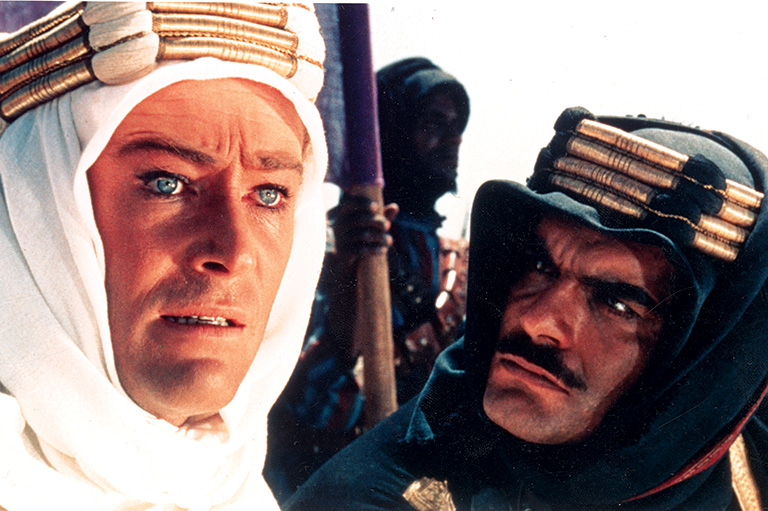
The 1962 film Lawrence of Arabia is today widely considered one of the most influential movies ever made. The film, directed by David Lean and starring Peter O’Toole, Alec Guiness, and Omar Shariff, among others, was nominated for ten Academy Awards, and won seven, including best picture and best director.
However, the movie also received substantial criticism upon its debut from friends and familiy members of some of the key figures depicted in the film.
Among the criticisms, there were complaints that some scenes were heavily fictionalized. As well, the portrayals of T.E. Lawrence, General Edmund Allenby, and other key characters were panned by some as inaccurate and deliberately sensationalized compared to the real-life figures.
We hope you’ll help us continue to share fascinating stories about Canada’s past by making a donation to Canada’s History Society today.
We highlight our nation’s diverse past by telling stories that illuminate the people, places, and events that unite us as Canadians, and by making those stories accessible to everyone through our free online content.
We are a registered charity that depends on contributions from readers like you to share inspiring and informative stories with students and citizens of all ages — award-winning stories written by Canada’s top historians, authors, journalists, and history enthusiasts.
Any amount helps, or better yet, start a monthly donation today. Your support makes all the difference. Thank you!
Themes associated with this article
Advertisement

